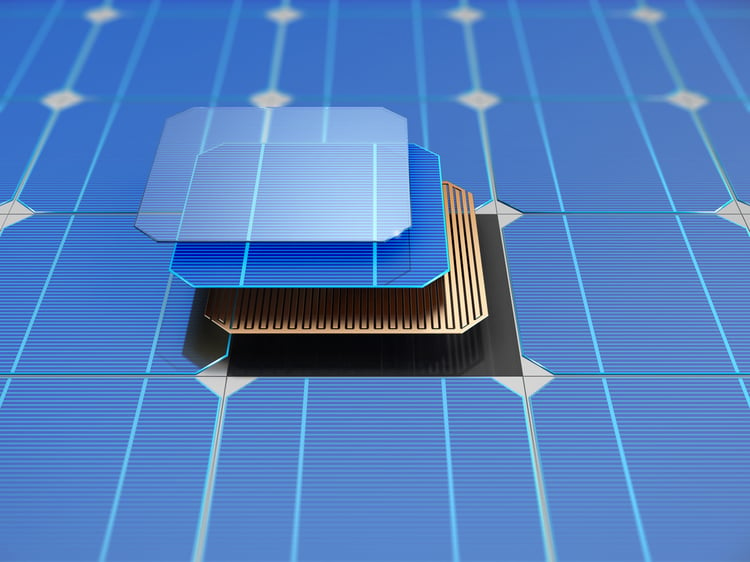When you look at the technical specifications of solar panels, their efficiency values can give a negative first impression. In 2021, monocrystalline solar panels are in the range of 20-23%, while polycrystalline panels are below 20%. However, conversion efficiency is not a critical factor when using sunlight – a free and virtually unlimited resource.
Save on electricity bills and reduce building emissions with solar energy.
On the other hand, when the energy inputs for power generation are fossil fuels, efficiency becomes much more important. Coal-fired power plants are typically 30-40% efficient, while combined-cycle gas plants are around 50-60% efficient.
- These generation systems have higher efficiency than solar panels, but looking at this metric alone can be misleading.
- Solar panels are less efficient in terms of energy conversion, but they are free to enter and operate with zero emissions.
Solar panel efficiency is only an issue when space is limited, as it may not reach the planned kilowatt capacity. Solar panels used on commercial and industrial rooftops have typical dimensions around 80” x 40”, and the most efficient models exceed 400W. If you want to install 400 kW, you need 1,000 – that's over 22,000 square feet. for solar panels only, plus spacing required for maintenance purposes.
What determines solar panel efficiency?

The main solar energy manufacturers constantly invest millions in research and development, with the aim of improving their photovoltaic cells. However, this paid off over time:
- In 1990, solar panels could only convert about 10% of sunlight into electricity.
- In 2021, the most efficient solar panels on the market are approaching 23% efficiency.
- In other words, solar panels can now produce 2.3 times more energy in a given space compared to their performance 30 years ago.
The efficiency of solar cells is determined by the photovoltaic material and also by the way the module is connected and designed in general. Monocrystalline cells are more efficient as they are made from single crystals of high purity silicon. On the other hand, polycrystalline cells are made of multiple crystals, and this affects their efficiency.
This does not mean that polycrystalline solar panels are of inferior quality. They have a lower conversion efficiency due to material properties, but there are high-quality solar modules of both types.
What are PERC solar cells?

Many of the high-performance panels available today use PERC technology, which increases productivity by up to 12%. PERC stands for Passivated Emitter and Rear Contact, and these cells have many design features that increase their efficiency.
- PERC cells have a reflective layer beneath them – passing sunlight is reflected back to the photovoltaic material, generating more energy.
- They also have anti-reflective coatings and surface textures that maximize sunlight captured and converted into electricity.
PERC cells are often cut in half to reduce electrical resistance losses, further increasing their energy production. You'll notice that many solar panels now use 120 or 144 half cells instead of the traditional 60 and 72 cell designs. Because the solar cells are cut in half, the total space requirements are almost the same and the panel dimensions are not significantly affected.
How High-Efficiency Solar Panels Save Space
As the efficiency of photovoltaic cells continues to increase, solar panels will be able to generate more watts per square meter.
- A 400W solar panel that measures 80” x 40” is producing 18W per sf.
- With a 33% efficiency increase, it would be possible to generate 24W per sf.
Generally, having space for solar panels is not a problem in buildings such as shopping centers and distribution centers. However, multi-story buildings have a large floor area relative to the roof area – and much of the available space is already used by HVAC equipment. In these cases, high-efficiency solar panels will maximize kWh production per square meter covered.
R&D has also reduced the cost of solar panels . You could expect to pay more than $10,000 per kW of capacity 20 years ago, but now home solar systems cost less than $3,000 per kW in many parts of the US. Even lower prices are possible in the utility sector, where solar panels are being installed for less than $1,000 per kW.


3 comments
This article offers a clear perspective on solar panel efficiency! It’s fascinating to see how advancements in technology have significantly improved energy conversion over the years. While efficiency is important, the benefits of solar energy—like zero emissions and free sunlight—make it a smart choice for sustainable energy. Great insights!
Great article on solar panel efficiency! It’s crucial for consumers to understand how efficiency impacts performance and cost-effectiveness. Your insights help demystify the topic, making it accessible for everyone considering solar energy. Looking forward to more discussions on renewable energy and its benefits for our environment!
Excelente artigo sobre a eficiência dos painéis solares! É crucial entender o que realmente significa a eficiência para tomar decisões informadas na escolha de sistemas solares. As explicações claras ajudam a desmistificar o conceito e a fazer escolhas mais acertadas para otimizar o desempenho e o retorno do investimento.